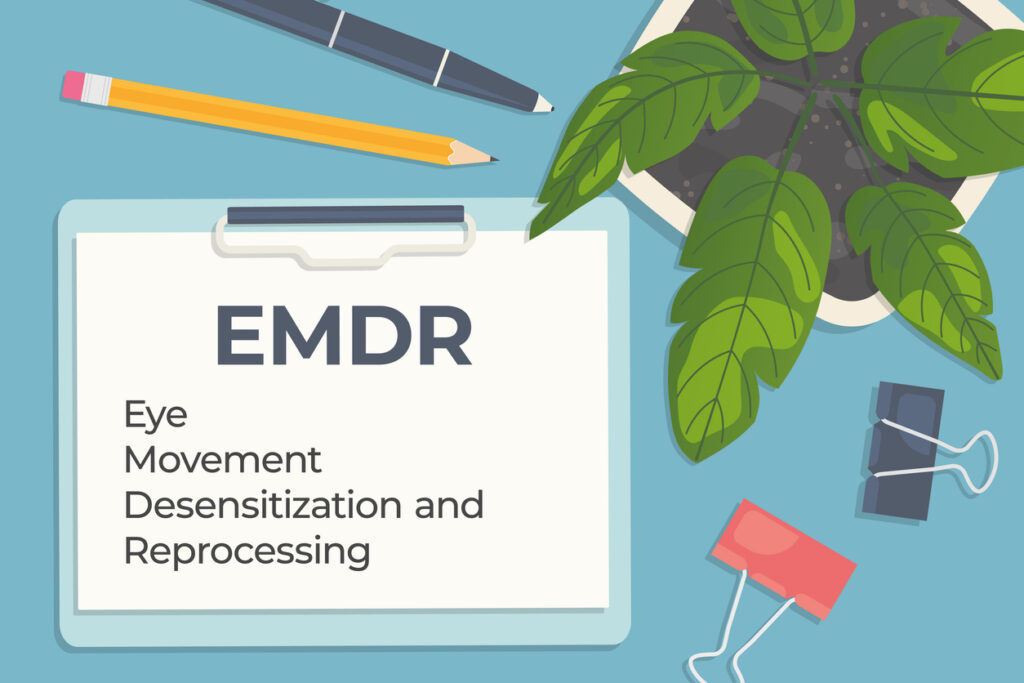The Role of EMDR in Trauma Therapy

Trauma can leave an indelible mark on mental health, impacting thoughts and feelings in ways that make it difficult for individuals to move forward. Eye Movement Desensitization and Reprocessing (EMDR) therapy has emerged as a highly effective approach for addressing traumatic memories and promoting healing. Backed by extensive research, EMDR works by helping individuals process disturbing events and replace negative thoughts with positive beliefs. It’s a transformative treatment that has been endorsed by the World Health Organization as a first-line therapy for trauma.
Understanding EMDR Therapy
EMDR therapy, short for Eye Movement Desensitization and Reprocessing, is a structured approach to trauma treatment. It helps individuals desensitize the emotional intensity of traumatic memories while reprocessing these experiences to foster healthier mental patterns. This innovative method focuses on the brain’s natural healing mechanisms, utilizing rapid eye movement to facilitate the processing of distressing thoughts and feelings.
At the core of EMDR therapy is the belief that unresolved traumatic memories contribute to negative thoughts, which in turn affect mental health. These unprocessed memories can manifest as symptoms of post-traumatic stress disorder (PTSD), anxiety, depression, and even eating disorders. EMDR sessions aim to address these symptoms by targeting the root cause—unresolved trauma.
How EMDR Works
EMDR therapy consists of several phases, including history-taking, treatment planning, and desensitization and reprocessing. During EMDR sessions, the therapist guides the client through a series of rapid eye movements or other forms of bilateral stimulation while focusing on a disturbing event. This process helps the brain reframe traumatic memories, reducing their emotional charge and allowing for the integration of positive beliefs.
Research shows that EMDR therapy can significantly alleviate the symptoms of PTSD and other trauma-related conditions. Unlike traditional talk therapy, which often requires extensive verbal exploration, EMDR therapy emphasizes processing traumatic memories at a neural level. This makes it an efficient and effective option for many individuals seeking relief from the burden of past trauma.
Addressing Traumatic Memories and Negative Thoughts
Traumatic memories often linger in the mind, creating a cycle of negative thoughts and self-perceptions. For example, someone who experienced a disturbing event may internalize beliefs such as “I am powerless” or “I am unworthy.” These thoughts can profoundly impact their overall mental health and ability to form positive relationships.
Through eye movement desensitization and reprocessing, clients can confront these memories in a safe and controlled environment. The process not only diminishes the emotional pain associated with the trauma but also replaces negative thoughts with positive beliefs, such as “I am in control” or “I am deserving of love and respect.”
EMDR in Practice: What to Expect
An EMDR treatment plan typically involves 6 to 12 sessions, though this may vary depending on the individual’s needs and the complexity of their trauma. Each session is carefully structured, beginning with identifying the specific disturbing event to be addressed. The therapist then guides the client through the desensitization process, using rapid eye movement or other forms of bilateral stimulation to reprocess the memory.
Clients often report feeling a sense of relief and clarity after just a few EMDR sessions. This is because the therapy allows the brain to process traumatic memories in a way that neutralizes their emotional impact. Over time, clients develop greater resilience and a renewed sense of empowerment.
Beyond Trauma: EMDR for Eating Disorders and More
While EMDR therapy is most commonly associated with PTSD, its applications extend far beyond trauma. Research shows that EMDR can be effective in treating eating disorders, anxiety, depression, and even chronic pain. By addressing the underlying thoughts and feelings tied to these conditions, EMDR therapy helps clients achieve lasting improvements in their mental health.
For individuals struggling with eating disorders, for example, EMDR therapy can target the traumatic memories or negative beliefs that contribute to disordered eating patterns. By reprocessing these experiences, clients can break free from cycles of self-criticism and develop healthier relationships with themselves and their bodies.
Why Choose EMDR?
The effectiveness of EMDR therapy has been widely recognized by mental health professionals and organizations worldwide. The World Health Organization recommends movement desensitization and reprocessing as a primary treatment for PTSD, citing its strong evidence base and high success rates. Unlike some other therapeutic approaches, EMDR does not require clients to recount their trauma in detail, making it a more accessible option for those who may find traditional talk therapy overwhelming.
Another key advantage of EMDR is its efficiency. With a typical treatment plan spanning 12 sessions or fewer, many clients experience significant improvements in a relatively short time. This makes it an attractive option for individuals seeking relief from trauma-related symptoms without committing to long-term therapy.
Building a Path to Healing
Trauma can feel like an insurmountable obstacle, but with the right support, healing is possible. EMDR therapy offers a path to recovery by helping individuals process traumatic memories, transform negative thoughts, and embrace positive beliefs. Whether addressing PTSD, eating disorders, or other mental health challenges, EMDR therapy provides a powerful framework for lasting change.
By integrating desensitization and reprocessing into a comprehensive treatment plan, EMDR therapists empower clients to reclaim their lives. As research continues to illuminate the benefits of this approach, more individuals are discovering the transformative potential of eye movement desensitization and reprocessing.
In the journey toward mental health and resilience, EMDR therapy stands as a testament to the brain’s capacity for healing and growth.
